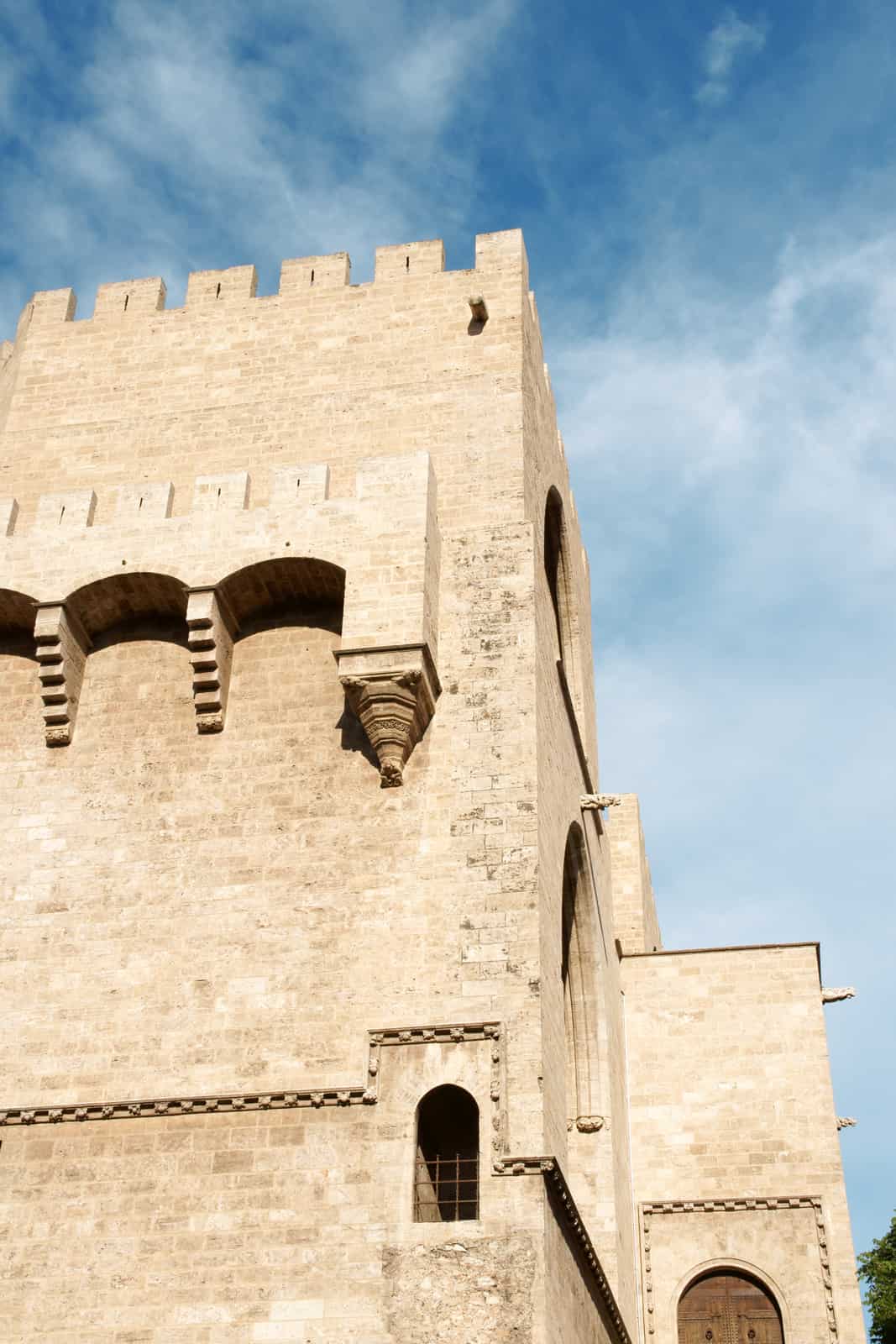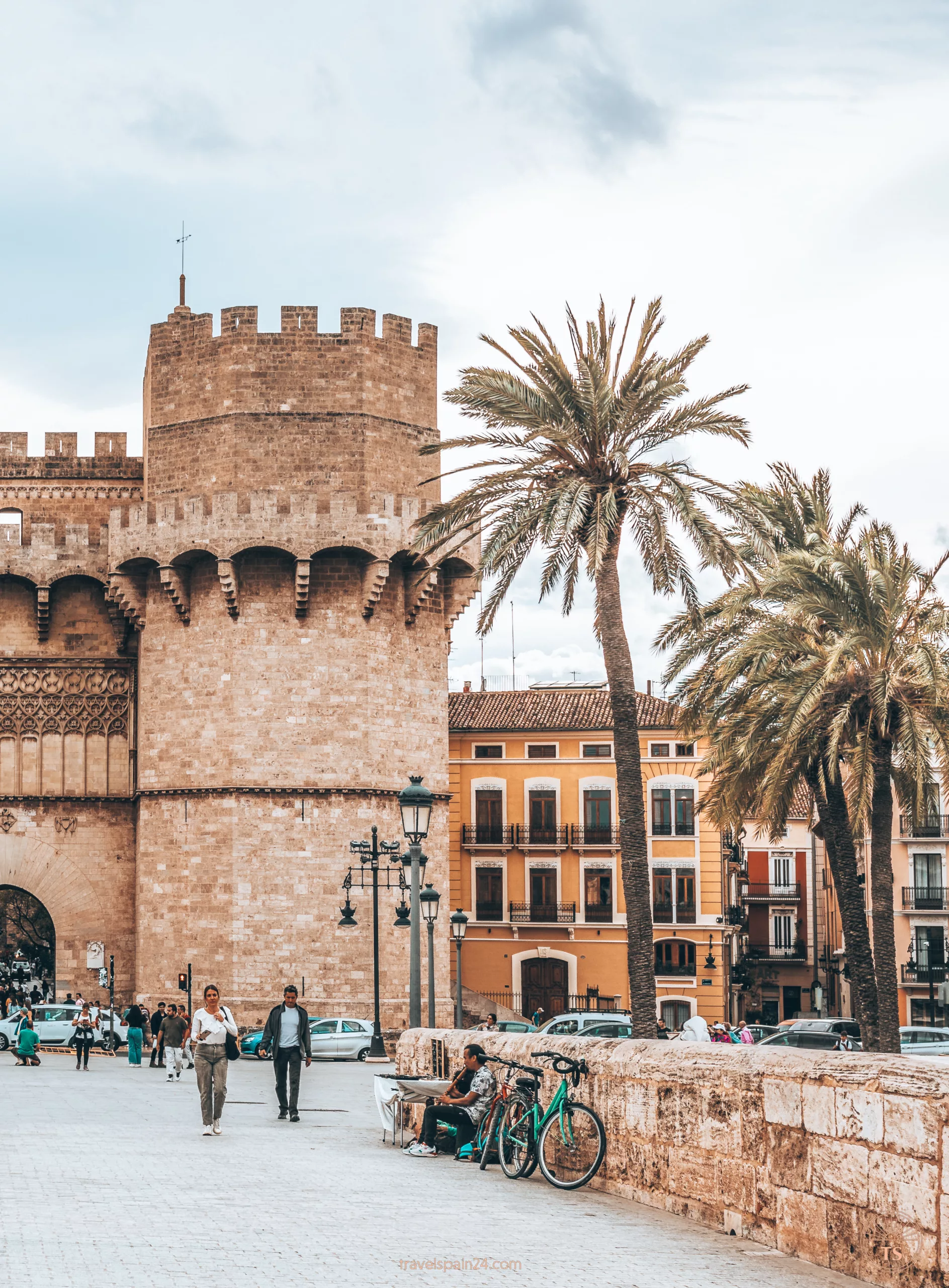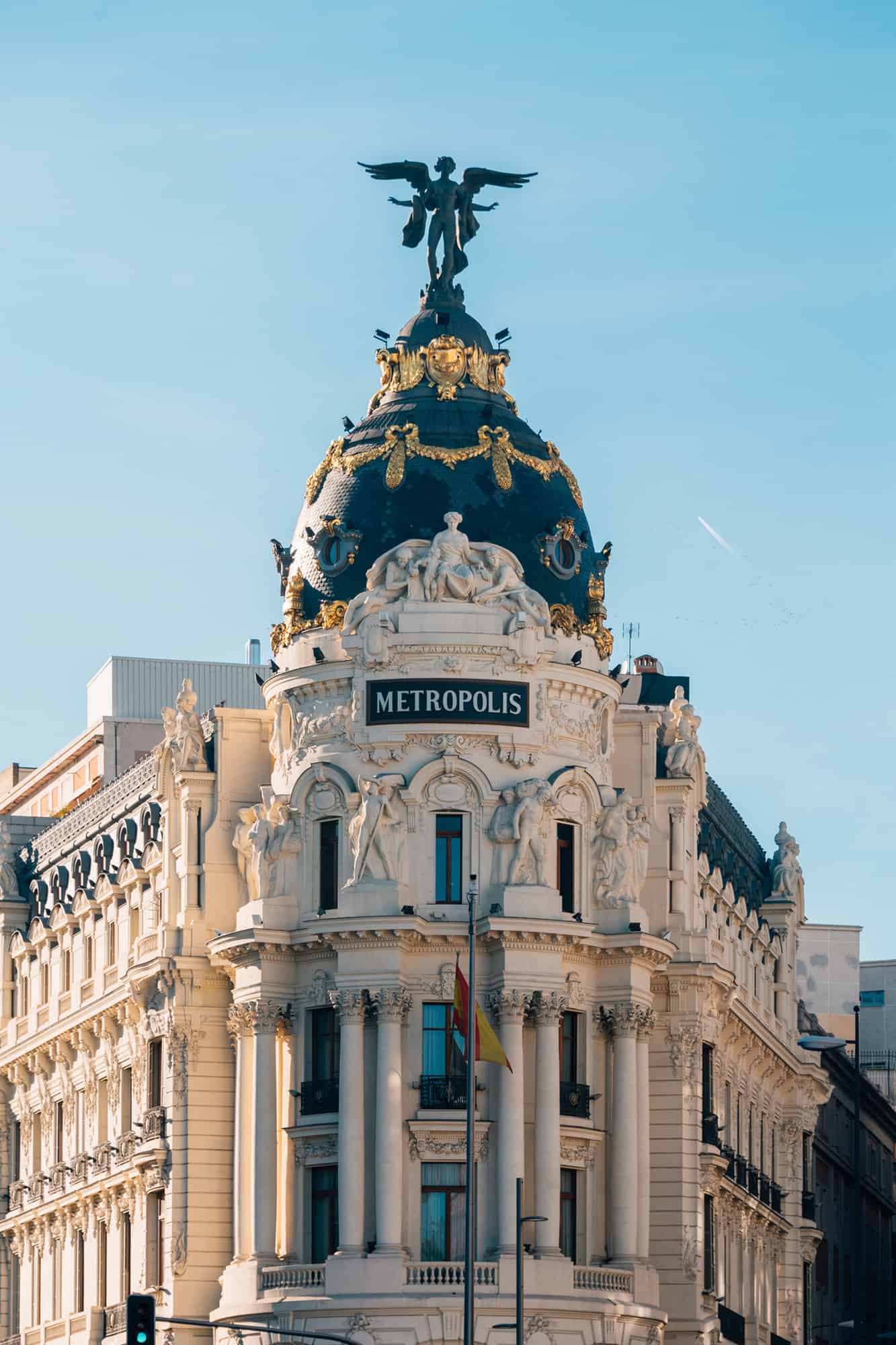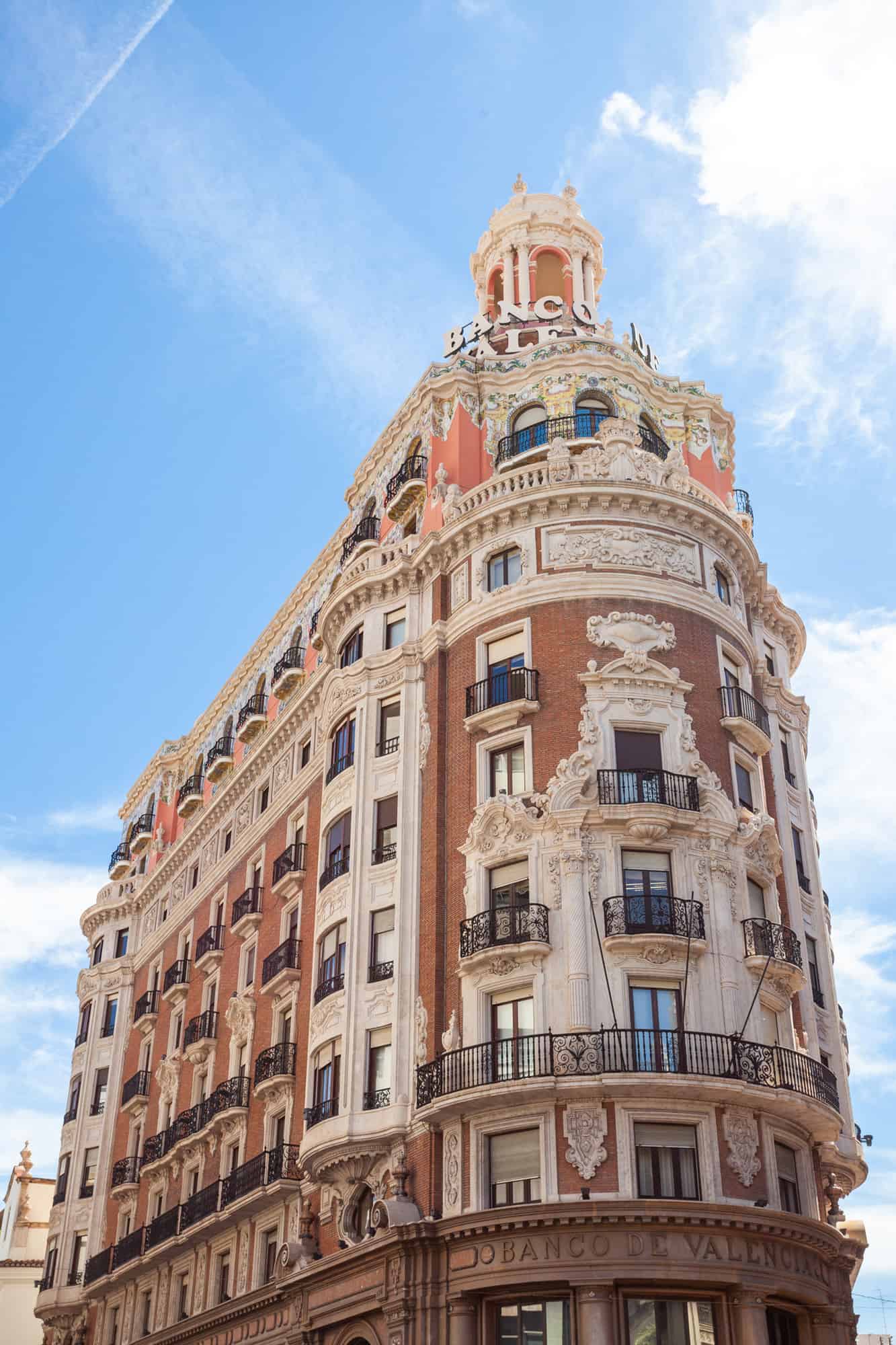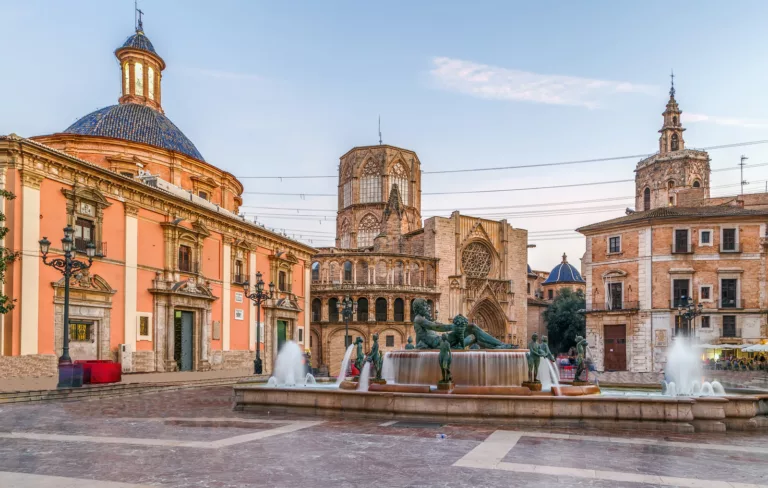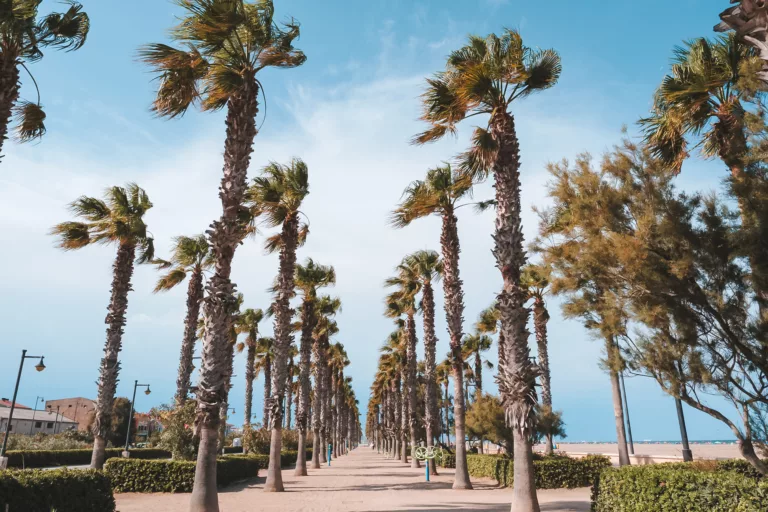Torres de Serranos (Serranos Towers)
Planning a visit to Torres de Serranos? Our guide provides all the necessary information, from how to get there to its historical and architectural significance. Plus, we answer common questions about tickets and more.

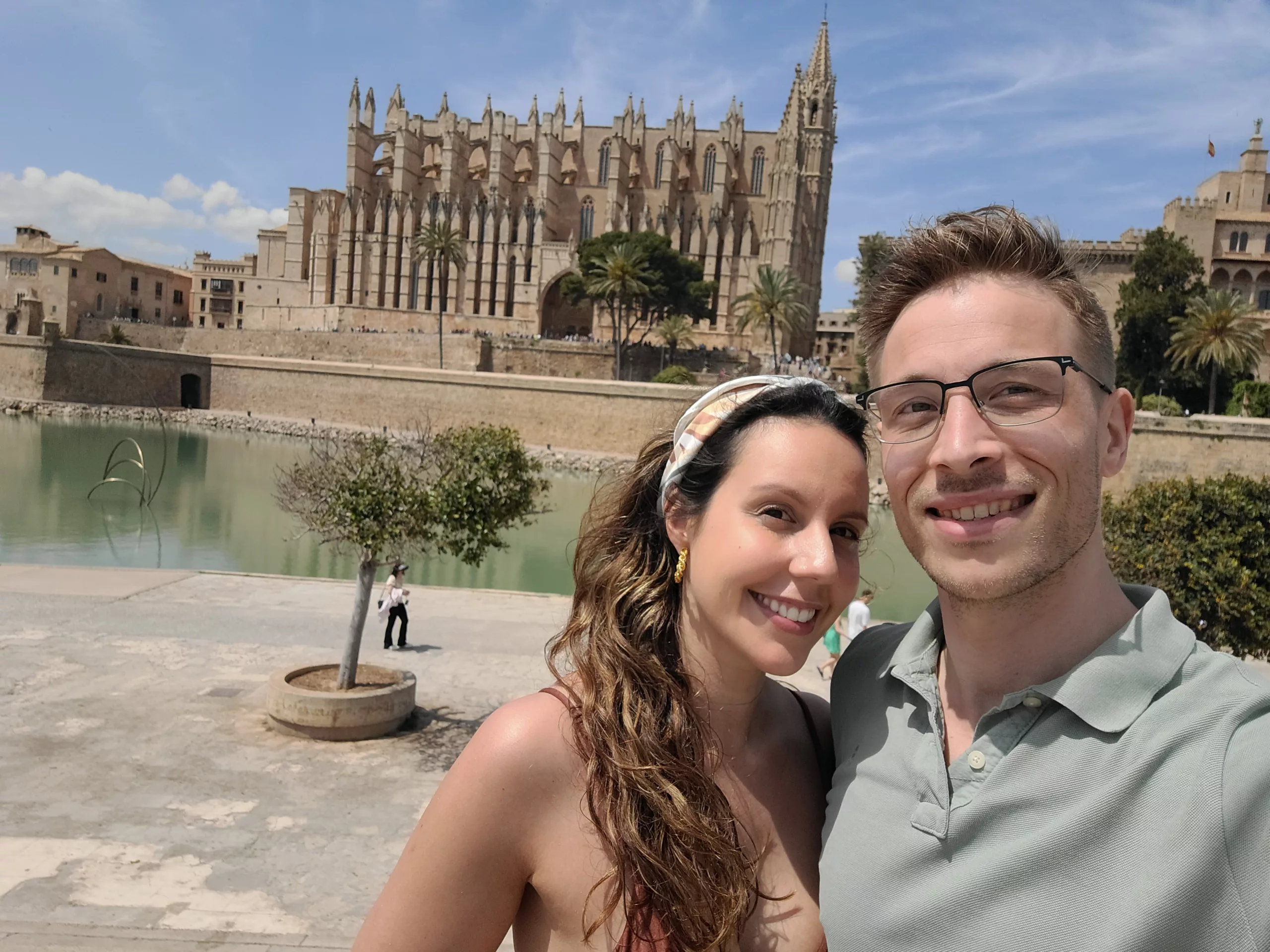
Hi, we’re Timon & Filipa!
We travel across Spain in our motorhome, Speedy, and update TravelSpain24 with fresh content, practical tips, and personal stories from the road. Our goal is to help you experience Spain beyond the typical tourist trails.
One of the best-preserved monuments of La Comunidad Valenciana, the Torres de Serranos, gives visitors a unique taste of 14th-century Valencia. As the city’s main entrance, it was a vital gate in Valencia’s past and still holds significance today as a gateway into the city’s buzzing old town, El Carmen.
When you see the Torres de Serranos looming over you, you’ll instantly feel like you’ve been transported to a medieval fairytale, just like I did. Learning about this beloved monument’s history beforehand can help make your visit more memorable. Here’s what you should know about the towers.
Torres de Serranos: Practical Information
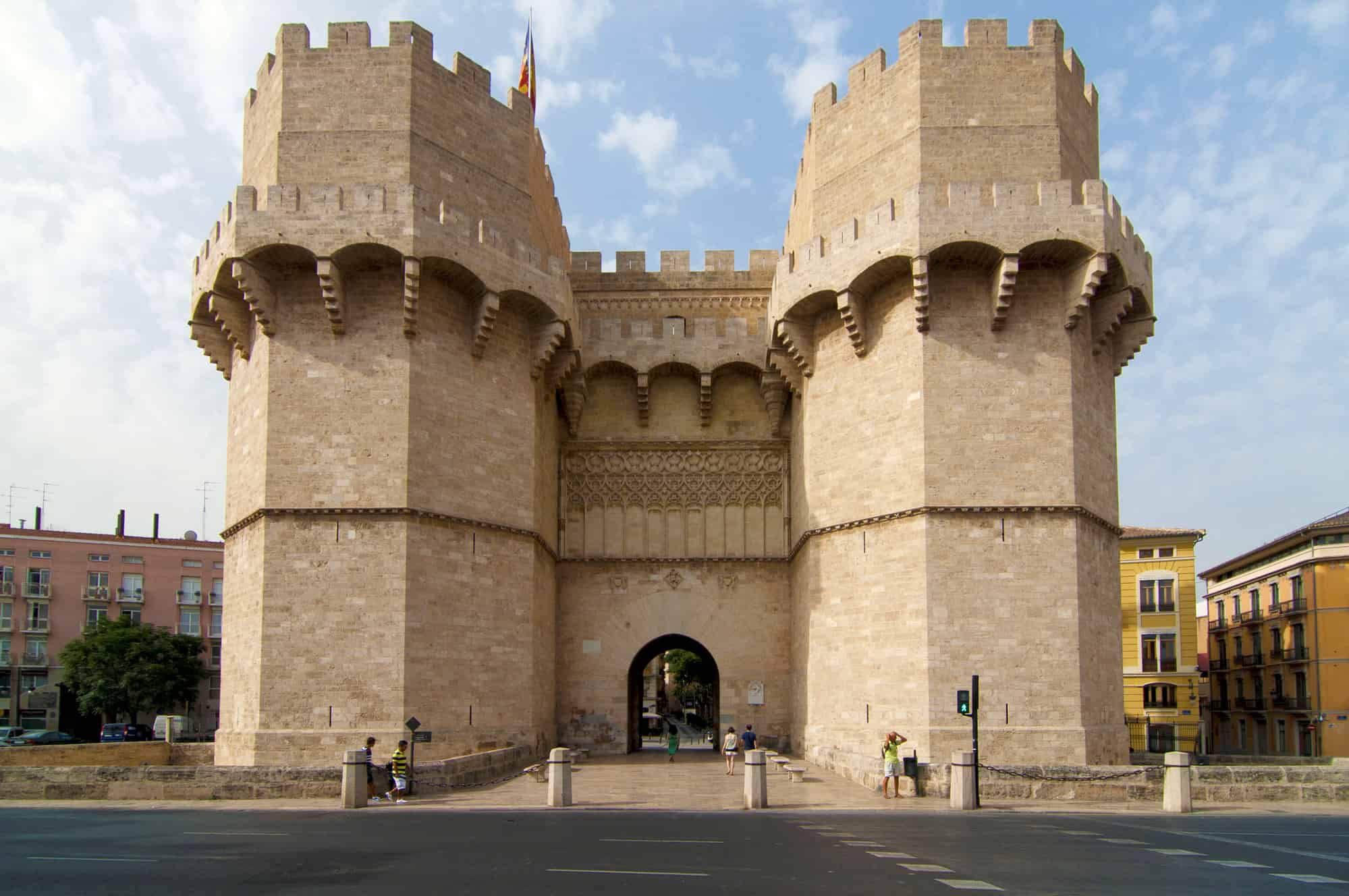
The Torres de Serranos is not just a historical monument but also a window to breathtaking views of the city. Here’s a quick guide to help you plan your visit:
Opening Hours:
Tuesday to Saturday:
Morning: 10 am – 2 pm
Afternoon: 3 pm – 7 pm
Sundays and Holidays:
10 am – 2 pm
Closed:
January 1, January 6, May 1, December 25
Special Notes:
Weather and winter daylight can affect the opening hours of the towers. On rainy days, the Torres de Serranos is closed for safety reasons. The towers may close earlier when it gets dark early in the winter.
Admission Fees:
Visiting the Torres de Serranos is one of the most affordable historical activities that you can do in Valencia. You can even get free admission on a Sunday or a holiday, so if you’re backpacking on a budget or traveling cheaply, these are the perfect times to go.
General Entry: €2,-
Discounted Rate: €1,- (for children aged 7-12, students, pensioners)
Free Admission: Sundays and holidays
Visiting Tips:
Early mornings are ideal for a peaceful experience and great photography, avoiding the crowds that gather around 12 PM. If you’re looking for more spectacular viewpoints in the city, don’t miss La Terraza at Blanq Carmen Hotel, close to the Torres de Serranos, for a fantastic rooftop bar experience in Valencia.
Valencia is a big city worth visiting, but if you’re not well-versed in navigating its landmarks, you may want to check out this bike tour. This will lead you to the Torres de Serranos and other cool spots around Valencia, like the City of Arts and Sciences and Turia Park.
Torres de Serranos: Transportation & Accessibility
The Torres de Serranos, a must-visit landmark in Valencia, is accessible through various transportation options. Here’s a guide to help you reach the towers conveniently:
By Bus:
From City Center:
Buses C1, C2, and 28 are your best options.
Near Turia Park:
Opt for buses 94 and 95.
North of City Center:
Buses 6, 11, and 26 will take you close to the towers.
By Metro:
The closest metro stop is Alameda, which is approximately a 14-minute walk to the towers.
Biking in Valencia:
If you prefer renting a bike in Valencia, there’s plenty of space around the towers on the side to leave your bike.
Overall Transportation Tips:
Buses are the most convenient way to reach the Torres de Serranos, with multiple routes covering various parts of the city. The metro option is available but involves a short walk. Biking is a viable option, especially with parking facilities around the towers.
I don’t recommend taking a rental car to the Torres de Serranos because parking will be challenging. The monument is next to a busy road without parking nearby, so you may have trouble getting there.
If the Torres de Serranos is on your Valencia bucket list, and you want to see it throughout your trip, I recommend staying in the Valencia old town for a scenic view of the towers.
The old town is home to other sites like the Plaza de Virgen, the Valencia Cathedral, and the Valencia Central Market that you can enjoy seeing too.
Torres de Serranos: History
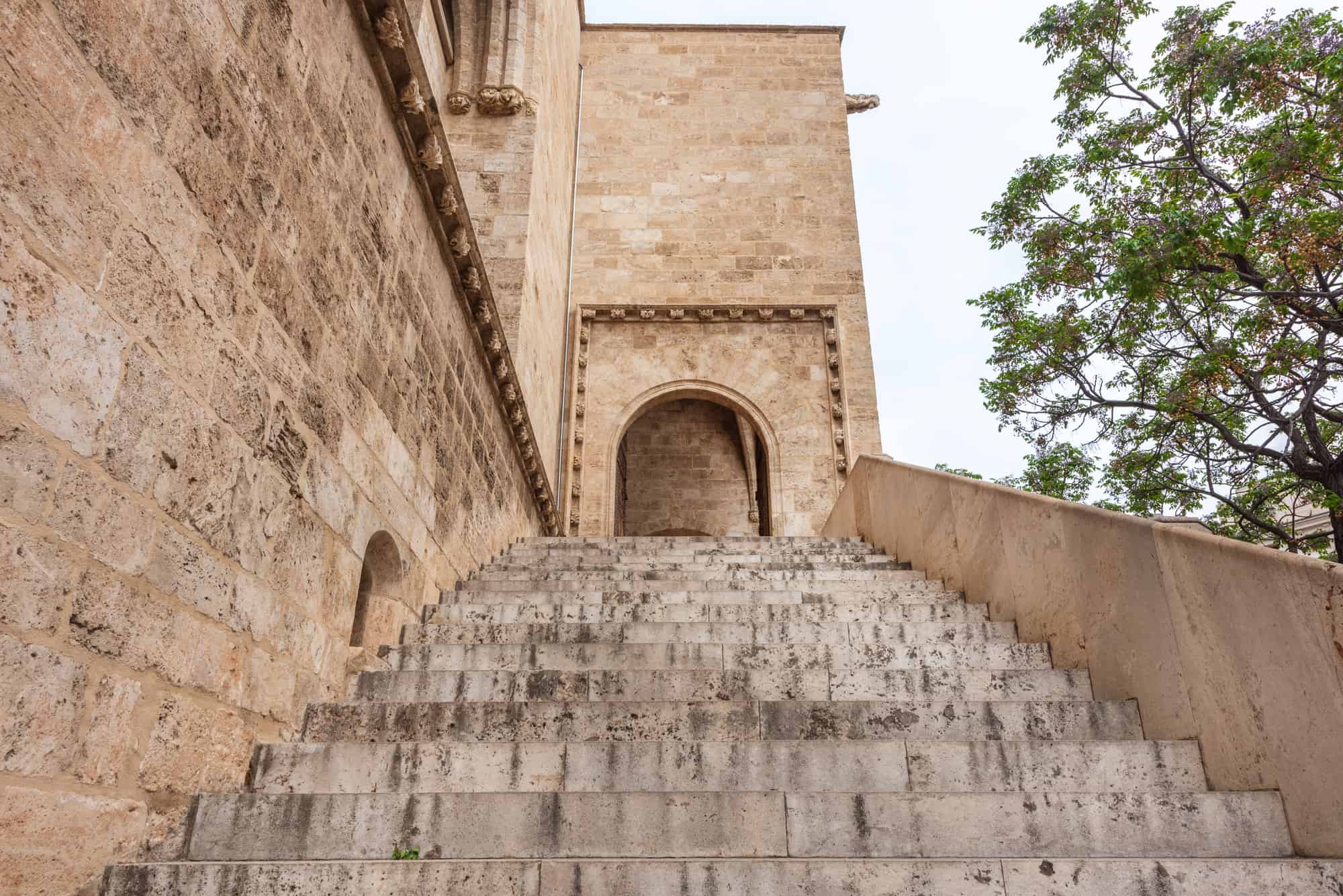
The construction of the Torres de Serranos began in 1392 under the supervision of Pere Balaguer. Since the gates were so busy, he designed the towers to be defensive structures to protect the city from any incoming threats. The rest of the city walls around the Torres de Serranos were knocked down in 1865, but the towers were saved and used as a prison for nobles for 300 years.
Now, the towers are home to an outstanding event of a Valencian festival called Las Fallas. Las Fallas takes place from the 1st to the 19th of March and is an extravaganza filled with satire, giant art sculptures, and fire that burns them all at the end.
If you’re visiting Valencia in March, include the Torres de Serranos in your itinerary for the Crida, the proclamation that decrees the beginning of the festival. It’s an amazing once-in-a-lifetime event that you won’t want to miss.
Torres de Serranos: Architecture
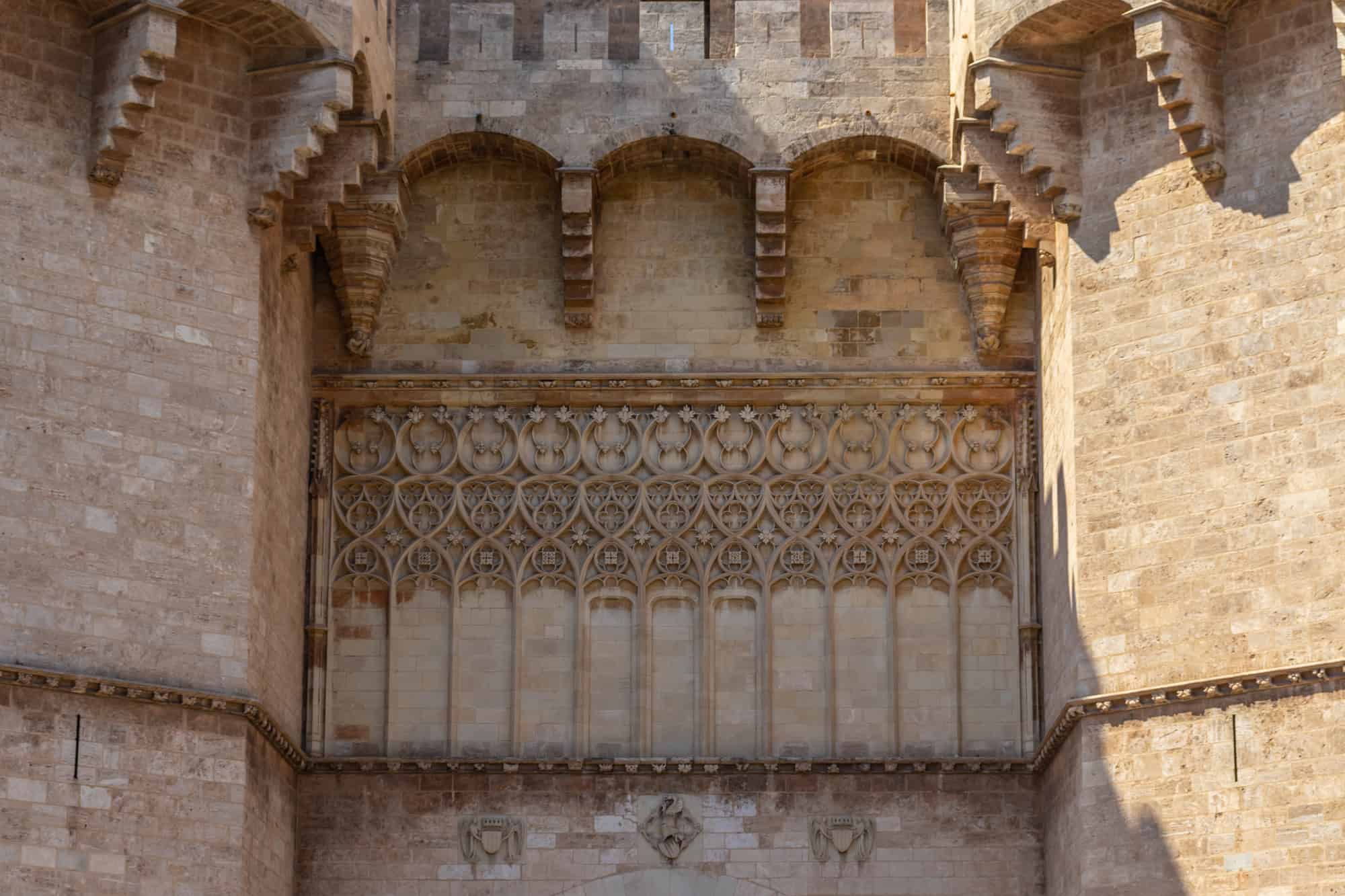
The Torres de Serranos was built in the Gothic style, with walls consisting of solid stone for fortification. While the rest of Valencia’s ancient walls were destroyed, architects kept and modified the towers throughout history.
The towers are covered in a cladding of limestone, mainly from a town called Alginet near Valencia, which was done to give the building a more luxurious and distinguished appearance that you can witness when you visit.
In 1397, a majestic stone staircase was additionally built to add to the towers’ grandeur. The staircase enlarged the building, which makes it possible for dozens of tourists to visit the Torres de Serranos today.
The towers were also architecturally modified during the Spanish Civil War as well. To avoid having works of art damaged from the Prado Museum in Madrid, they were stored in the Torres de Serranos to keep them safe.
In December 1936, a 90-centimeter layer of reinforced concrete was laid on the first floor to protect the pieces of art stored below. This was designed for civil war purposes as well, just in case the towers were damaged or destroyed in a bombing raid.
Torres de Serranos: Nearby Attractions
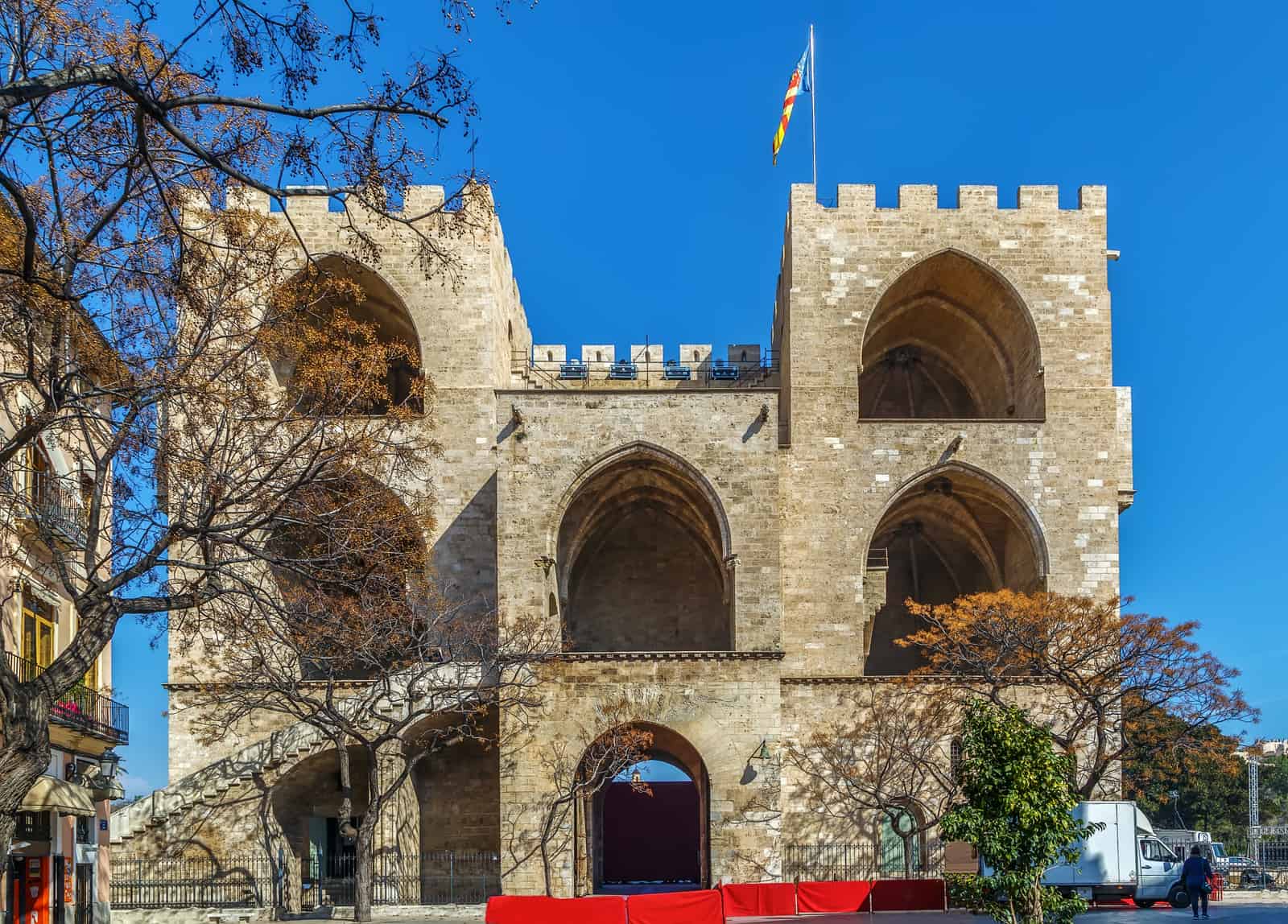
The best way to experience the nearby attractions of the Torres de Serranos is through a guided tour. I recommend booking a medieval Valencia 1-hour segway tour to see other sites of the Valencia old town.
In addition to viewing the towers, you’ll also pass by and visit the Plaza de la Virgen, El Carmen Square, Portal de la Valldigna, the Arabic city walls, San Nicolás Church, and the Silk Exchange Market.
Afterward, I recommend visiting the nearby Museum of Fine Arts of Valencia, the second-largest art museum in Spain, to witness some of the most beautiful Renaissance paintings. You can see rooms dedicated to the exquisite collection of the famous Valencian painter Joaquín Sorolla and a room dedicated to Francisco de Goya.
Torres de Serranos: FAQs
How old is Torres de Serranos
The Torres de Serranos was built in a gothic style in 1392 by the architect Pere Balaguer, making them over six centuries old. From 1586 until 1887, the towers were used as a prison for nobles.
How tall is Torres de Serranos?
The Torres de Serranos is 33 meters tall and was built for defensive purposes. It used to be surrounded by a defensive moat and currently faces the Puente de Serranos bridge, which crosses the River Turia.
Do you need tickets for Torres de Serranos?
Yes, you need to purchase entry tickets for the Torres de Serranos on days that are not free, which excludes Sundays and holidays. Please refer to the Torres de Serranos: Practical Information section for more details about ticket prices.
Search the site
Popular Destinations
Just letting you know
When you buy something through our links, we’ll earn a small commission—don’t worry, it won’t cost you any extra! It’s a win-win, right?
Exclusive Heymondo Travel Insurance Offer
Planning a trip? Make sure you’re covered! We’ve teamed up with Heymondo to give our readers a special deal: 5% off travel insurance. Grab this deal and know you’re looked after on your next trip.

